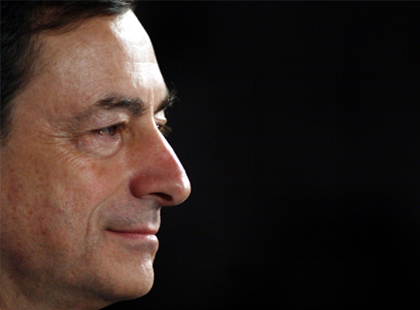ECB: will Draghi really be able to deliver on his promise in March?

What was expected to be a dull first meeting of the year, turned out to be an exciting ECB meeting with ECB president Mario Draghi opening the door widely for new ECB action in March. While ECB meeting will again feed bold speculations about what could happen in March, the question remains whether Draghi will really be able to deliver on his promise.
No action in January but probably in March
Interest rates and all else were kept on hold. However, ECB president Draghi sounded much more concerned about the outlook for the Eurozone economy, both in terms of growth and inflation, than in december. Draghi explicitly mentioned the renewed sharp drop in oil prices, the appreciation of the euro (let’s not forget, the side-effect of Draghi’s monetary policy own goal in December) and the slowdown of emerging markets and China. In addition, Draghi mentioned the volatility in financial and commodity markets as one of the factors behind the increase in downside risks since the start of the new year.
Against this background, Draghi sent several strong messages, hinting at new ECB action at the next ECB meeting. First of all, Draghi reintroduced the concept of explicit forward guidance by stating that “we expect them (key ECB interest rates) to remain at present or lower levels for an extended period of time”. In the view of Ing, a clear indication that despite having announced the lower bound for interest rates several times of the last years, the ECB is again considering cutting rates. Moreover, an even stronger hint at new action was given with the sentence “it will therefore be necessary to review and possible reconsider our monetary policy stance at our next meeting in early March”. According to Draghi, “work will be carried out to ensure that all the technical conditions are in place to make the full range of policy options available for implementation, if needed”. A bit of a surprise as Ing thought that all possible options had already been on the table back in December.
Financial markets reacted enthusiastically to Draghi’s hints and the euro exchange rate dropped immediately. "The question, however, is whether and what the ECB can really deliver in March. Let’s not forget that the outcome of the December meeting looked like a compromise between doves and hawks, with the ECB eventually delivering less than markets had expected – Carsten Brzeski, analyst in Ing, says – Admittedly, at least the external environment for the Eurozone economy has worsened since the December meeting but it is unclear what the ECB can do to tackle low prices. It is hard to imagine that oil purchases will be on the agenda in March. Nevertheless, unless oil prices rebound in the coming weeks or the Eurozone economy surprises to the upside, it will again be difficult for the ECB not to deliver with new action in March". In his opinion, the most likely common denominator for both hawks and doves should be another rate cut (perhaps the idea of a two-tier deposit rate will be dug out again), possibly combined by another marginal fine-tuning of QE.

